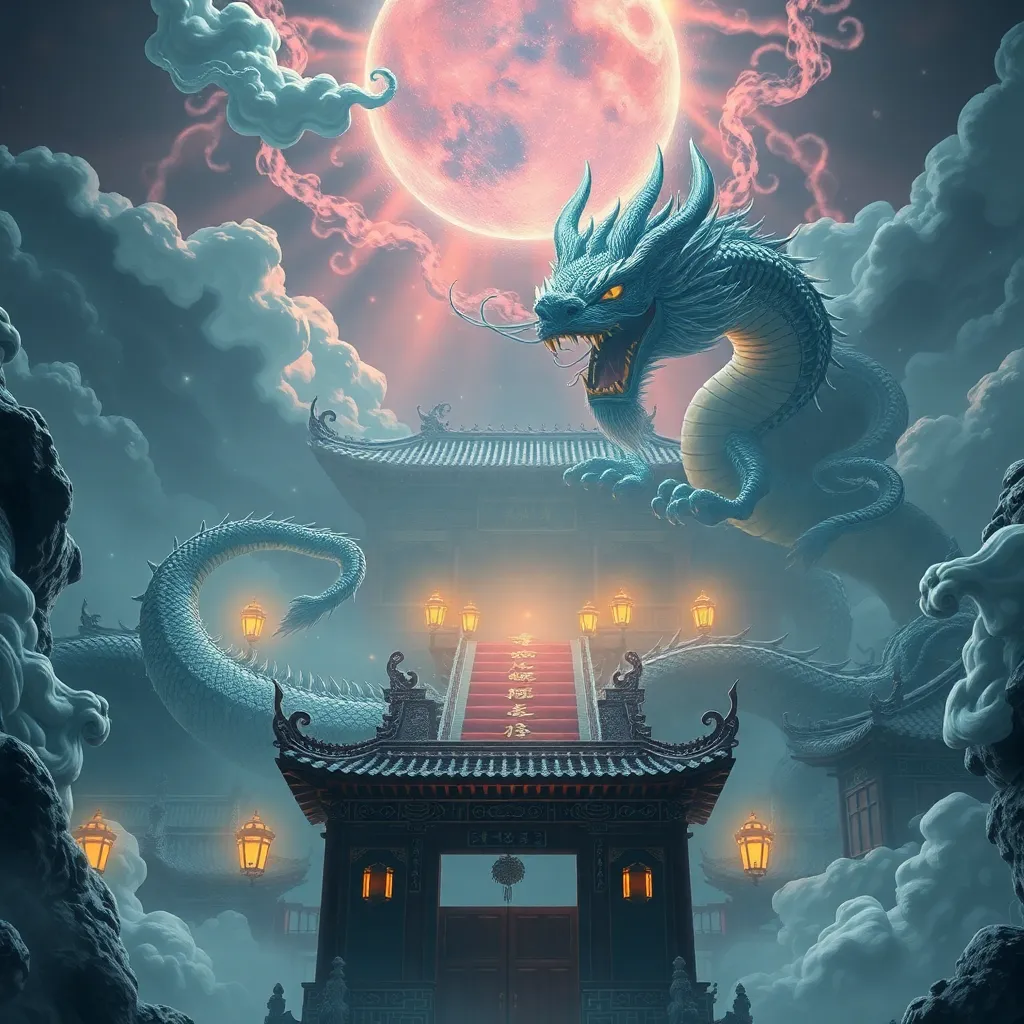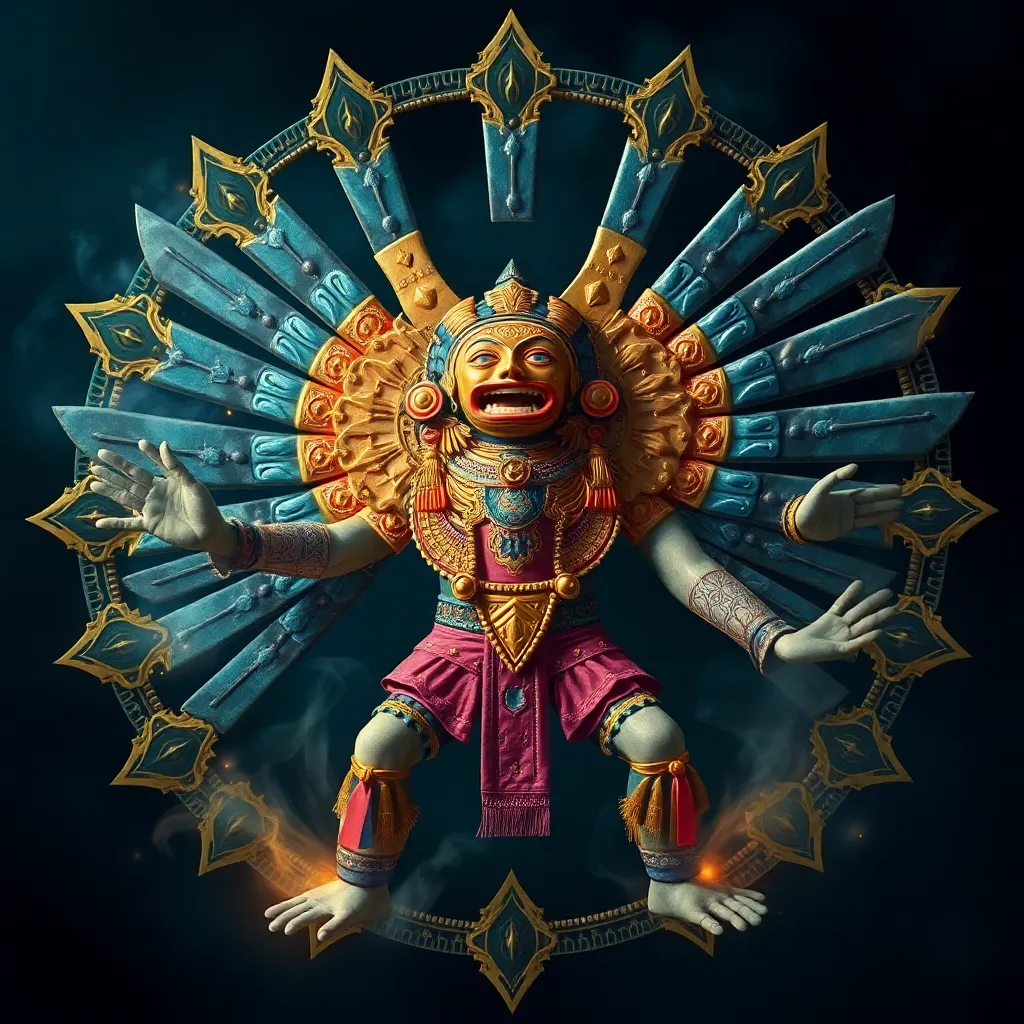The Dragon King’s Palace: Diving into the Depths of Chinese Mythology
I. Introduction to Chinese Mythology
Chinese mythology is a rich tapestry of stories, beliefs, and traditions that have shaped the cultural landscape of China for millennia. It serves not only as a means of understanding the natural world but also as a reflection of the moral and ethical values of Chinese society. Central to this mythology is the figure of the Dragon King, a powerful deity who rules over the seas and embodies the essence of water’s life-giving and destructive forces.
The Dragon King, known as Long Wang, is a significant character in Chinese folklore, symbolizing power, protection, and the majesty of the natural world. His realm, often depicted as a magnificent underwater palace, is a place of wonder that captivates the imagination and highlights the deep connection between the Chinese people and their environment.
II. The Dragon King: A Symbol of Power and Protection
A. Origins and attributes of the Dragon King
The origins of the Dragon King can be traced back to ancient Chinese beliefs where dragons were revered as symbols of strength and auspiciousness. The Dragon King is often depicted with a human-like figure, adorned with dragon-like features such as scales, claws, and long whiskers. He is frequently shown riding on a wave or surrounded by aquatic creatures, reinforcing his dominion over water.
B. The Dragon King’s role in Chinese culture and folklore
In Chinese culture, the Dragon King is not only a god of the sea but also a guardian of the weather and agriculture. He is believed to control rain and floods, making him a crucial figure for farmers who depend on water for their crops. His role extends to:
- Providing rain to ensure bountiful harvests.
- Protecting fishermen and sailors on their journeys.
- Acting as a mediator between humans and the spirit world.
III. The Mythical Realm: The Dragon King’s Palace
A. Description of the palace and its architectural wonders
The Dragon King’s Palace, or Longgong, is often portrayed as a breathtaking underwater city filled with stunning architecture and treasures. Descriptions vary in different tales, but common features include:
- Glittering coral formations that resemble ornate pillars and arches.
- Vast halls adorned with pearls and precious gems.
- Gardens of aquatic plants that glow in the dim light of the ocean depths.
The palace is a realm of harmony, where various sea creatures coexist under the Dragon King’s rule, emphasizing the interconnectedness of life in the aquatic ecosystem.
B. The palace as a symbol of the underwater world
The Dragon King’s Palace symbolizes the mystery and beauty of the underwater world. It represents the idea that, much like the ocean itself, there are depths to be explored both literally and metaphorically. The palace serves as a reminder of the balance of nature, where the Dragon King governs the turbulent waters and maintains order among the myriad sea creatures.
IV. The Four Dragon Kings: Guardians of the Seas
A. Overview of the four regional Dragon Kings
In Chinese mythology, there are four Dragon Kings, each associated with a specific sea and region of China:
- East Sea Dragon King</ (Donghai Longwang): Ruler of the East China Sea.
- South Sea Dragon King</ (Nanhai Longwang): Ruler of the South China Sea.
- West Sea Dragon King</ (Xihai Longwang): Ruler of the Gulf of Bohai and the Yellow Sea.
- North Sea Dragon King</ (Beihai Longwang): Ruler of the North China Sea.
B. Their responsibilities and the significance of their domains
Each Dragon King is responsible for the waters of their respective regions, controlling the tides and weather patterns. They are venerated in local traditions and rituals, and their domains are thought to hold unique characteristics and treasures. The significance of these Dragon Kings lies in their ability to protect and provide for the people living along the coasts, reinforcing the belief in the divine connection between nature and human life.
V. Legendary Tales and Adventures
A. Notable myths featuring the Dragon King
Numerous myths feature the Dragon King, showcasing his power and benevolence. One famous tale recounts how he saved a village from drought by descending from his palace to bring rain. Another popular story tells of how the Dragon King battled a fierce sea monster that threatened to disrupt the harmony of the ocean.
B. The Dragon King’s interactions with humans and other deities
The Dragon King often interacts with humans and other divine beings, showcasing his role as a protector and mediator. In many stories, he grants favors to those who show respect to the sea, while punishing those who disrespect it. His relationships with figures such as the Jade Emperor and other celestial beings highlight the complex hierarchy of Chinese mythology.
VI. The Dragon King’s Influence on Chinese Festivals and Traditions
A. Celebration of Dragon Boat Festival
The Dragon Boat Festival, celebrated on the fifth day of the fifth lunar month, honors the Dragon King and reflects his significance in Chinese culture. This vibrant festival includes:
- Dragon boat races that symbolize the search for the poet Qu Yuan.
- Offerings of zongzi (sticky rice dumplings) to appease the Dragon King.
- Rituals to pray for good weather and bountiful harvests.
B. Rituals and offerings to the Dragon King
Throughout the year, various rituals and offerings are made to the Dragon King in coastal towns. These include:
- Burning incense and joss paper to honor him.
- Setting up altars at the shore with food offerings.
- Conducting ceremonies to seek blessings for seafaring voyages.
VII. Modern Interpretations and Cultural Impact
A. The Dragon King in contemporary media and literature
The Dragon King remains a prominent figure in contemporary Chinese media and literature. He appears in:
- Films and television series that draw on traditional myths.
- Books and novels that reinterpret his stories for modern audiences.
- Artworks that depict his majestic palace and aquatic realm.
B. The enduring legacy of the Dragon King in modern Chinese society
In modern times, the Dragon King symbolizes resilience and the importance of respecting nature. His stories serve as a reminder of the need for environmental conservation and the harmonious coexistence of humanity and the natural world.
VIII. Conclusion: The Lasting Legacy of the Dragon King’s Palace
A. Reflection on the cultural significance of the Dragon King’s stories
The tales of the Dragon King and his palace continue to resonate within Chinese culture, serving as a bridge between the past and present. They encapsulate fundamental values of respect, harmony, and the interconnectedness of all living beings.
B. The relevance of these myths in understanding Chinese heritage and identity
As we explore the depths of Chinese mythology, the stories of the Dragon King remind us of the rich heritage that has shaped Chinese identity. They highlight the importance of mythology in understanding cultural values and the enduring impact of these legends on contemporary society.



